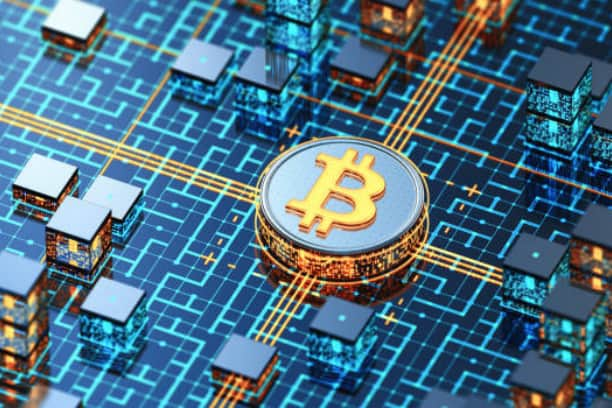SOL chain (Solana chain), one of the most popular public chains, has attracted a large number of developers and investors due to its efficient and low-cost transaction processing capability.The core mechanism of SOL chain includes its unique consensus mechanism, throughput optimization and distributed computing power. This article will explain in detail the working principle of SOL chain, help readers fully understand how it realizes efficient transactions, and analyze its technical advantages and challenges, aiming to provide a clear and easy-to-understand reference for users interested in the cryptocurrency field.

Basic overview of the SOL chain
SOL Chain (Solana) is a high-performance blockchain designed to focus on solving the bottlenecks of traditional blockchains in terms of throughput, transaction latency and cost. Unlike mainstream blockchains such as Bitcoin and Ether, SOL Chain greatly improves transaction processing power and speed through innovative technical architecture and realizes the goal of low fees. This makes SOL Chain an ideal platform for applications such as Decentralized Finance (DeFi) and NFT (Non-Homogenous Tokens).
Unlike Ether's Proof of Work (PoW) and the Proof of Stake (PoS) consensus mechanisms of many other public chains, Solana utilizes an innovative Proof of History (PoH) mechanism, which is the key to its efficient operation.
Analysis of Core Mechanisms: Proof of History (PoH)
What is Proof of History (PoH)?
One of Solana's core innovations is its unique Proof of History (PoH) mechanism.PoH is a way to determine the sequence of events on a blockchain through timestamps and historical verification. Simply put, PoH enables each block to create a uniquely verified time sequence based on past blocks by generating a continuous time chain. This mechanism eliminates the time synchronization and computation required by traditional blockchains to validate transactions and greatly improves the processing power of the blockchain.
How does PoH improve efficiency?
PoH is innovative in that it does not rely on traditional consensus protocols to confirm the order of each transaction, but rather ensures the order and consistency of blocks through chained records of historical data. In this way, nodes can more efficiently confirm state updates on the blockchain without performing complex calculations. In this way, Solana achieves thousands of transactions processed per second, greatly improving the efficiency of the blockchain.
Comparison of PoH with other consensus mechanisms
PoH significantly reduces energy requirements compared to traditional Proof of Work (PoW) mechanisms, avoiding the huge power consumption associated with PoW mechanisms such as Bitcoin, etc. PoH is more time-sensitive than Proof of Stake (PoS), allowing for faster authentication and increased responsiveness of the entire network.

Throughput and Transaction Speed in SOL Chains
Solana's high throughput and transaction speed is another reason why it is a popular public chain. Through the PoH mechanism, Solana can process thousands of transactions per second (TPS), far exceeding the TPS of traditional blockchains such as Bitcoin and Ether, and even on par with large payment systems such as Visa. According to the Solana team, its test network has already achieved over 65,000 transactions per second.
Why do SOL chains achieve such high throughput?
- Parallel Processing: Solana utilizes a parallel smart contract execution engine called "Sealevel" that can process different transactions on different processors at the same time, increasing throughput.
- Efficient network protocols: Solana uses optimized network protocols that reduce communication delays between nodes and increase processing speed across the network.
Data Comparison: SOL Chain vs. Traditional Blockchain
| Blockchain Name | Transactions Per Second (TPS) | Consensus Mechanism | Transaction Speed |
| ————- | —————— | —————– | ———— |
| Solana | 65,000+ | Proof of History | Very Fast |
| Ethereum | 30-40 | Proof of Stake | slower |
| Bitcoin | 7-10 | Proof of Work | very slow |
| Visa | 24,000 | Centralized Payment System | Very Fast |
Advantages of SOL Chain's low commission
In addition to high throughput, another significant advantage of Solana is its low commission. In most mainstream public chains, especially Ether, transaction fees typically rise dramatically as the network becomes congested, increasing transaction costs for users. In contrast, Solana, through its efficient network architecture, makes it possible for transaction fees to be typically only a fraction of a cent per transaction. This makes Solana an ideal platform for a large number of small transactions and decentralized applications (DApps).
How do you ensure low processing fees?
Solana's low fees are due to the optimization of its innovative technical architecture, especially the PoH mechanism. Due to the high throughput of the network, there is less transaction congestion and therefore less verification resources are required per transaction, which naturally keeps the fee level low.
Solana Ecosystem and Applications
Solana is not only a technological breakthrough, but its ecosystem continues to evolve, attracting a large number of developers and projects.Solana's high performance and low fees have made it a popular platform for DeFi, NFT, and Decentralized Applications (DApps).
Main applications on Solana
- DeFi: Solana supports a wide range of decentralized financial applications, including decentralized exchanges (DEX), lending platforms, derivatives markets, and more.
- NFT: Solana has also become a major player in the NFT marketplace, with several large NFT projects and marketplaces such as Magic Eden choosing to distribute on Solana.
Examples of well-known projects
- Serum: Solana-based decentralized exchange (DEX) that provides the ultimate trading experience through high throughput and low transaction fees.
- Solanart: an NFT marketplace on Solana offering art and collectibles to buy and sell.
Solana's Challenges and Future Developments
Although Solana has made significant technological progress, it still faces some challenges. For example, the Solana network is slightly less decentralized than other public chains, and some users have expressed concerns about its security. Due to Solana's rapid growth, network stability has also become a concern, with several network outages occurring.
Future prospects for Solana
With the continuous optimization of the technology and the expansion of the ecosystem, Solana is expected to further enhance its competitiveness in the future and become a public chain alongside Ether and Bitcoin. In the future, Solana is expected to solve some of the current problems and further expand its application scenarios through more efficient protocols, broader developer support and a more stable network.
summarize
With its innovative Proof of History mechanism, high throughput, low fees and other advantages, Solana has become one of the public chains in the cryptocurrency field that has attracted much attention. Despite certain challenges, Solana's technological innovation and ecological development have undoubtedly brought new breakthroughs to the blockchain industry. With more developers and projects joining, Solana has great potential in areas such as decentralized finance (DeFi) and NFT, and deserves the continued attention of investors and technology enthusiasts.







